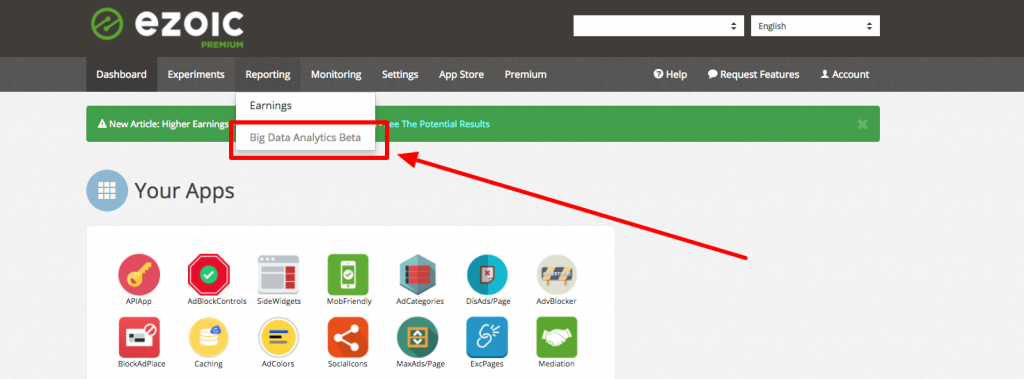How Does Word Count Affect Website Ad Earnings?
The topic of how long digital content should be has been debated and studied for a very long time. However, one area that is still a bit clouded in mystery is how word count affects ad earnings for publishers.

Understanding the relationship between word count, article length, and digital revenue is not necessarily an easy calculation to make; as many publishers do not a have a great dataset to compare apples to apples.
Furthermore, many sites base their current article length and word count on things like broad industry established SEO data. Essentially, choosing to write articles according to the results of SEO studies or user engagement studies (note: this isn’t necessarily wrong to do).
Below, I’ll take a different approach. I’ll show you some data and information from niche websites about how their session revenue and RPMs are affected by the word count or article length on their landing page.
This will give you some ideas about what kinds of word counts and article lengths drive the most revenue for different kinds of websites.
Why does article length affect website revenue?
Article length and word count have a direct impact on visitor engagement; however, this can be different for every website. We’ve learned over time — and previously shared — that authentic visitor engagement plays a huge role in the rates publishers are paid for their ad space.

Visitor engagement has a direct relationship with visitor behaviors as well.
This means, that when readers are engaged in content their sessions are longer and result in a greater number of pageviews.
Increased visitor engagement and longer sessions positively affect website ad earnings in two ways.
- More engaged time results in higher ad rates for your site
- Longer sessions and more pageviews result in higher session earnings (or EPMV)

Understanding the relationship between engagement, earnings, and article length or word count can be huge.
If publishers were to be able to have a greater understanding of this info they could essentially better monetize existing content (through augmentation) and create new, more profitable content; based on the word count data.
What website word counts earn the highest average revenues?
As I mentioned, this is highly dependant on the website; however, below I will give a few case study examples of some anonymized niche websites.

I have beat this drum to death, but it is vitally important that publishers understand total session revenue vs. page RPM.
Understanding which landing pages generate the most session revenue will help you understand the link between visitor behavior and total revenue.
For example, Page A may earn more than Page B, but if you learn that visitors landing on Page B visit three times as many additional pages as visitors landing on Page A, you might learn that Page B actually is that starting point for visitors earning three times as much revenue.
To that point, understanding page RPM can still be really useful for understanding the relationship between revenue, pages, and word counts.
Case Study #1: Technology website
This first example is a technology website. Its content is catered towards internet searchers that are seeking to better understand how to use a popular brand of technology and it’s products.

You can see here that, despite what conventional wisdom might have you believe, that on this website there seems to be a sweet spot for total page revenue.
Page word counts between 1000-2500 generate the highest revenues for this publisher.
Surprisingly, the pages with between 2500-500o words (the longest articles) actually generate less revenue for this publisher than their pages with 750-1000 words (some of their shorter articles).

When we take a deeper look at why this might be occurring, we learn that engaged pageviews are MUCH HIGHER on the articles with 1000-2500. This is consistent with the research we shared earlier.
This means that this publisher should be taking a much closer look at how their engaged pageviews and revenue correlate by understanding why those particular articles connect so well with their audience.
They may want to modify existing content to replicate some of the success those articles have, or create more content like this high-earning, highly-engaging content.
Case Study #2: Sports website
This case is a sports website. Its content is catered towards fans and people interested in a popular sports franchise.

In this example, we see a similar trend from the site we saw before. However, in this case, we can see that the articles with 1000-2500 words receive an RPM that is 3x as high as articles with 500 words or fewer.
As a publisher, you may look at this and say, “one article with 1000-2500 words is worth more than 3 articles with 500 words or fewer”.

What’s interesting on this site is that total page engagement is actually similar for all articles with more than 750 words.
Where you see a marriage between engagement and revenue is when you actually look at bounce rate by word count on this site.

This provides a nice picture of why the RPM is higher on pages with between 1000-2500 words. These articles maximize engagement and minimize bounce on this site.
Case Study #3: Recipe blog
This case includes a popular recipe blog. Its content is built for a large audience of searchers and visitors referred from social media websites.

Here, we see that this popular blog actually produces a similar page RPM across all articles more than about 250 words. In fact, the articles with 250-500 words outperform the longest articles in terms of RPMs.

This all starts to make a little more sense once we understand that average page duration is nearly the same of this site regardless of word count.
This can be understood better by looking at the site itself. Regardless of word count, many of the recipes include simple instructions, images, and other media.

Regardless of word count, we can see that this site has a loyal audience that scrolls to the bottom of the page nearly 33% of the time no matter what length the article is.
This info can help fill in some of the gaps about visitor behavior we were missing.
This site obviously has a lot of loyal visitors that find the content valuable and the word count is not as big of a factor due to the nature of the content. Readers will consume the whole thing 1/3 of the time no matter what.
Case Study #4: Tool/Application website
In many cases, webmasters that manage non-traditional websites, like an online application, tool, or gaming website will assume word counts don’t really apply to their content.
What we see in this final study — of an application website — is that this isn’t necessarily true.

You can see that their highest page RPM is on their site’s application pages; which are obviously very thin on actual words (less than 250). However, the pages with 5,000+ words actually generate almost exactly the same amount.
Furthermore, we see that there is a direct correlation between ascending word counts and page RPMs with this publisher.
This might be a surprise to a publisher that believed that word counts played no role in how they monetized their content or interacted with visitors.
Does word count affect website page RPM?
This is a question that is fair to ask after reviewing this data; however, what I think is pretty clear is that the publisher content plays a much larger role in this content than just the word count.
However, the word count does have a relationship with page RPM, visitor engagement, bounce rates, scroll percentages, and a whole host of other factors.
The things is … it is different for every website.
The good news is that you can measure this for yourself and use it to increase website ad earnings, augment your content, and generate new content like your most valuable content.
We pulled all the stats above from Ezoic’s new Big Data Analytics. The free analytics reporting tool on the Ezoic platform. Any publisher that monetizes their site with ads can sign up and use Big Data Analytics to see these stats for their site quickly and easily.

If you’re already using Ezoic, you can find this application under Reporting in your publisher dashboard.
How do you use word count data on your website moving forward?
I think it’s pretty simple.
If you have this info, you can figure out how to make your existing content more engaging and valuable. Do this by augmenting it based on what you can learn from your pages with top performing word counts.
If you find that the shorter articles are doing better, it may be because your longer articles are actually LESS engaging. You may want to find ways to chop up the content or make it more consumable for your readers.
Lastly, you can use this info when generating new content.
If you have further thoughts on this data, or questions for me regarding the case studies, share them in the comments.

